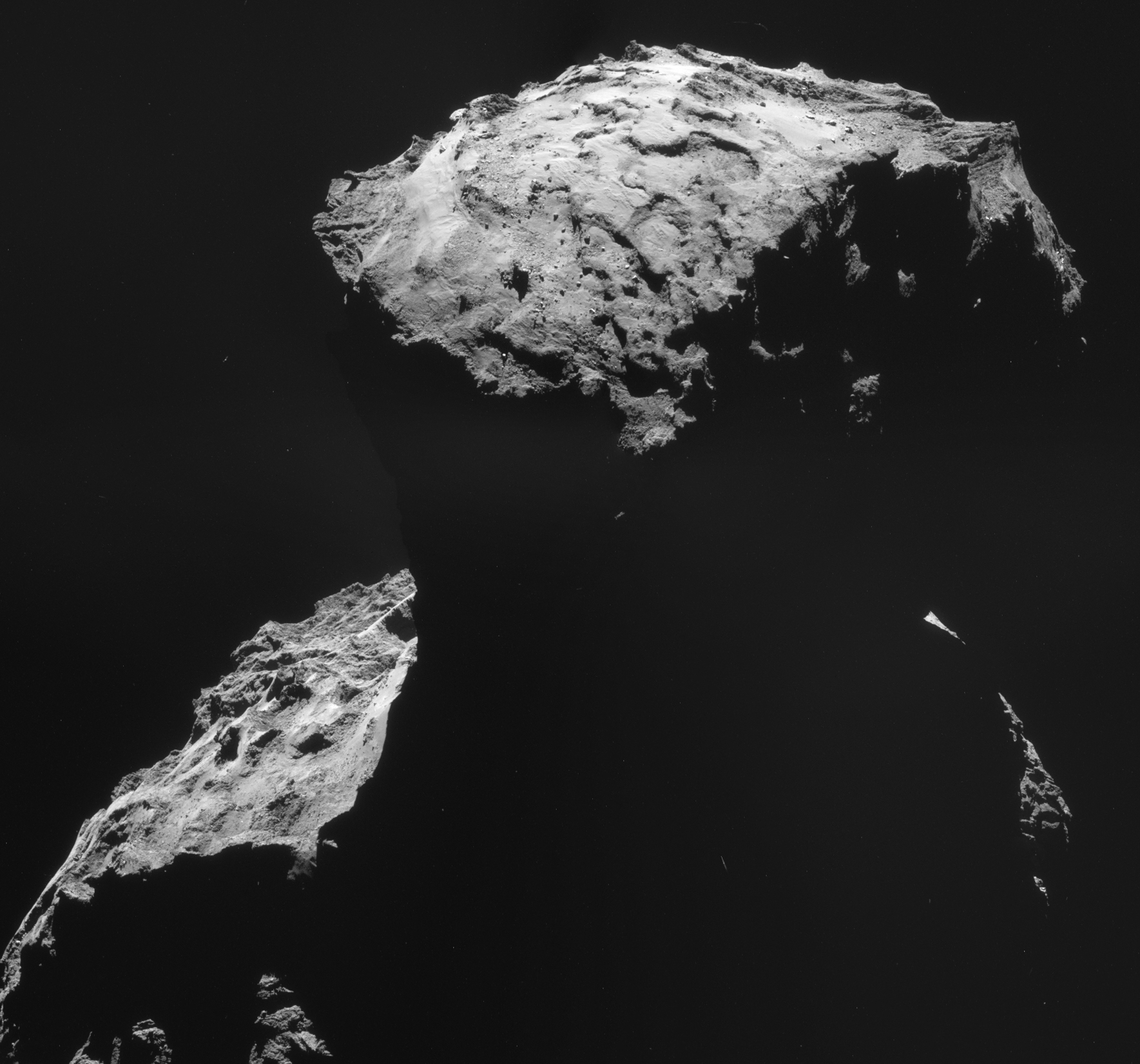
The landing site for Rosetta’s Philae comet lander now has an official name: AGILKIA!
And the history-making landing on comet 67P/Churyumov–Gerasimenko is just one week away! So there’s no time to waste.
Until today, Nov. 4, the targeted landing site was known as “Site J” and had been previously chosen as the primary site from a list of five finalists.
“Site J is named for Agilkia Island, an island on the Nile River in the south of Egypt. A complex of Ancient Egyptian buildings, including the famous Temple of Isis, was moved to Agilkia from the island of Philae when the latter was flooded during the building of the Aswan dams last century,” according to a statement from the European Space Agency (ESA), which funds the ongoing Rosetta mission.
Europe’s Rosetta orbiter is slated to deploy the small Philae lander on Nov. 12 for a daring touchdown on the “head” of a comet for the first time in human history.
The name Agilkia was selected by a jury comprising members of the Philae Lander Steering Committee, following a public naming competition run Oct. 16–22 by ESA and the German, French, and Italian space agencies.
The naming contest was open to citizens or permanent residents of ESA and EU (European Union) member states and also the United States of America, since NASA is a Rosetta mission partner. NASA contributed several science instruments.
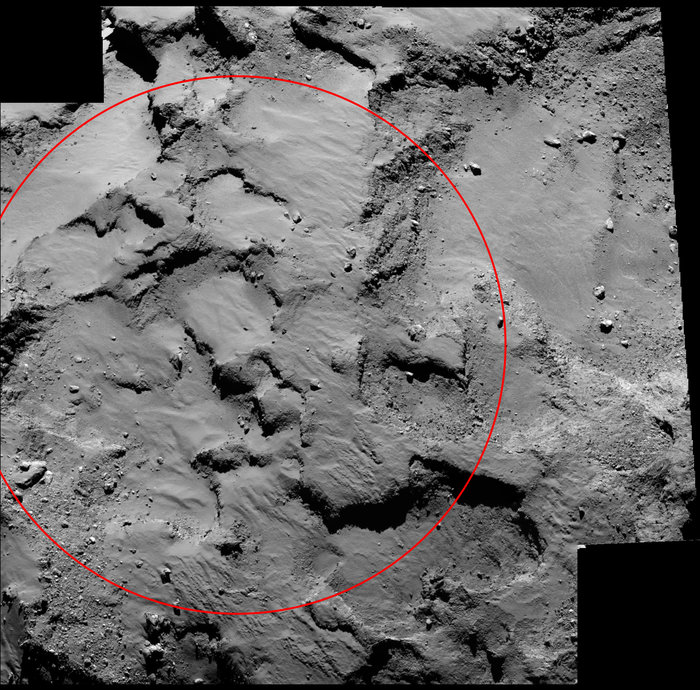
Although the competition lasted only a week, it attracted more than 8,000 entries worldwide from 135 countries.
The suggested names “showed great creativity and cultural diversity,” said ESA.
Over 150 people suggested Agilkia, making it one of the most popular entries.
In order to win the competition and a trip to watch the historic landing live from ESA’s Space Operations Control Centre (ESOC) in Darmstadt, Germany, participants also had to write a short description of up to 200 words explaining why this would make the ideal name for such a historic location.
“The decision was very tough,” says Prof. Felix Huber of the DLR German Aerospace Center, chair of the Steering Committee, in a statement.
“We received so many good suggestions on how to name Site J, and we were delighted with such an enthusiastic response from all over the world. We wish to thank all participants for sharing their great ideas with us.”
Based on both the name and description submitted, the jury selected Alexandre Brouste from France as the overall winner and the invitation for the trip to ESOC in Germany to follow the Philae landing live in person on Nov. 12.
“As with the winning entry, many suggestions echoed the Egyptian origins of Rosetta and Philae, named in recognition of milestones in decoding hieroglyphics, the sacred writing system of ancient Egypt,” said ESA.
“Many names dated back to the history of our planet’s exploration, as those journeys into the unknown are the natural forebears of Rosetta and Philae. Mythological names from all over the globe were also proposed, including gods and goddesses of water, fertility, life and creation, relating closely to the fundamental themes investigated by the mission.”
From now on, the comet landing site will be referred to by ESA and its mission partners as Agilkia—Site J is history.
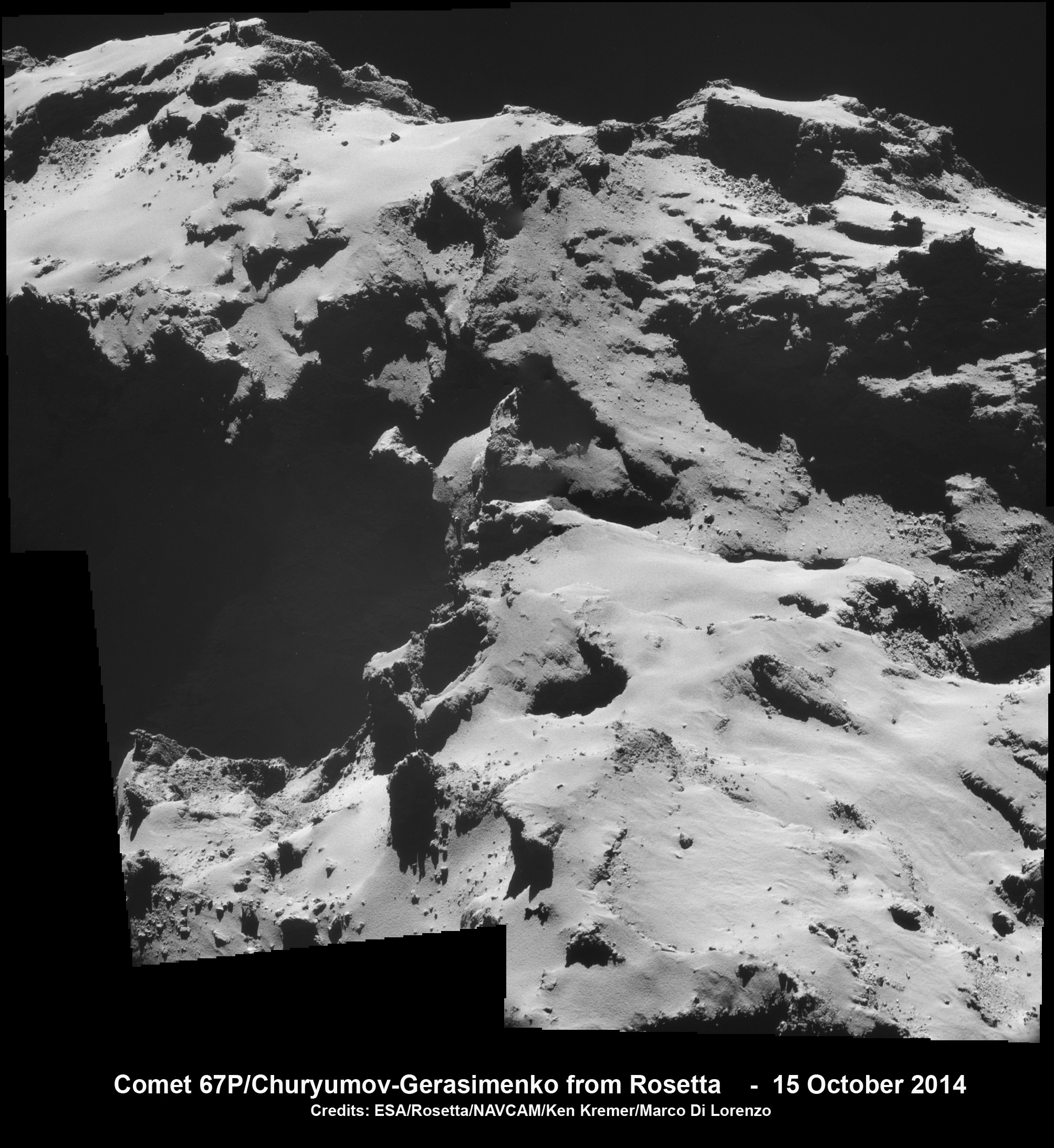
“And it couldn’t be a more appropriate name,” comments Fred Jansen, ESA Rosetta mission manager. “The relocation of the temples of Philae Island to Agilkia Island was an ambitious technical endeavour performed in the 1960s and 1970s to preserve an archaeological record of our ancient history.
“In eight days’ time, Philae will be deployed from the orbiter onto Agilkia. On 12 November, we’ll be attempting a unique comet landing, an even more ambitious endeavour to unlock secrets of our most remote origins.”
Agilkia is located on the smaller of the two “lobes” of the utterly bizarre comet and is shown in the high-res ESA mosaic herein. The touchdown zone is circled and is approximately 500 meters in diameter.
The two image mosaic of Philae’s primary landing site was taken by the OSIRIS narrow-angle camera on Sept. 14, 2014, from a distance of 30 kilometers. The image is about 1 km across.
Following a thorough science, engineering, and hazard assessment of the merits of Agilkia, ESA greenlighted the choice in mid-October for deployment of the Philae lander to the “head” of Comet 67P/Churyumov–Gerasimenko for humankind’s first attempt to touchdown on a comet.
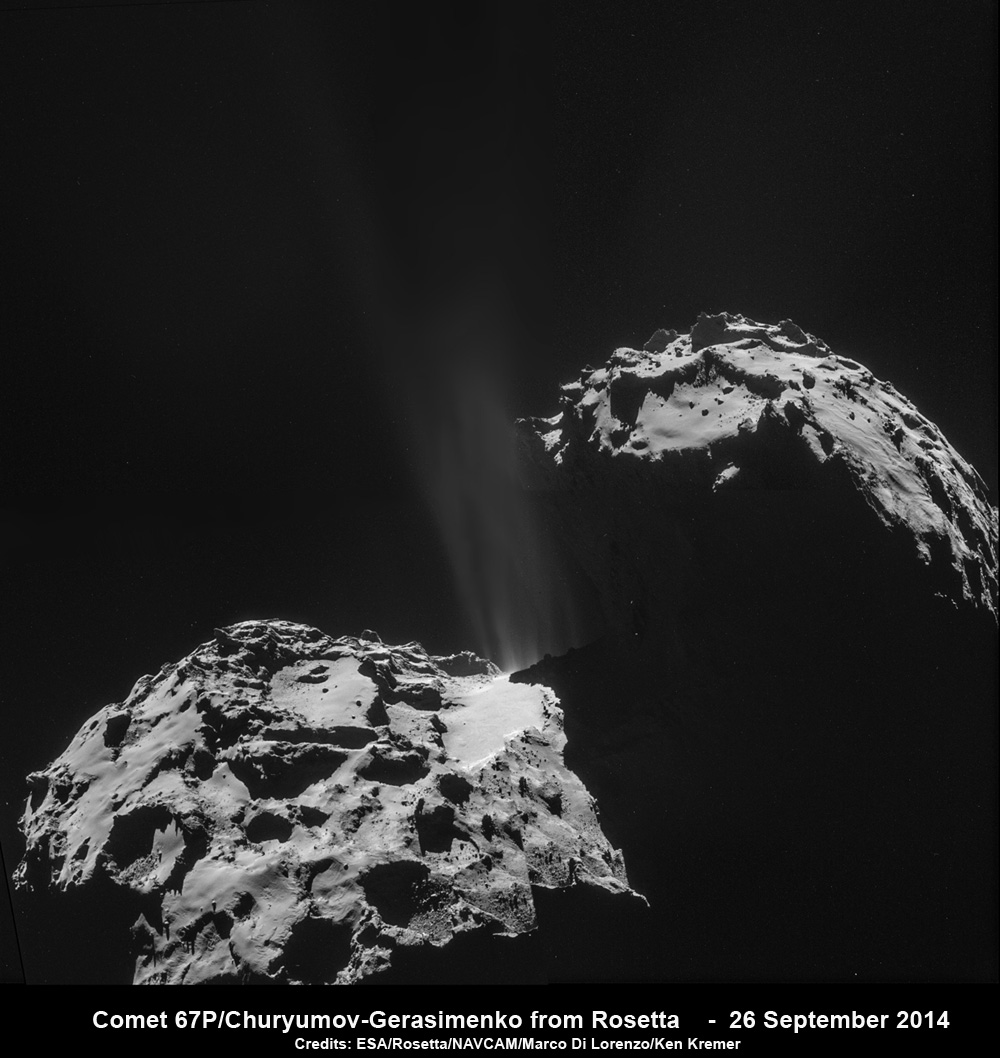
Rosetta was designed and built by ESA and already made history when it became the first probe from Earth to orbit a comet.
Since rendezvousing with the comet on Aug. 6, 2014, after a decade-long chase of over 6.4 billion kilometers (4 billion miles), a top-priority task for the science and engineering team leading Rosetta has been “Finding a landing strip” for the Philae comet lander.
Everything is currently on target for the momentous landing.
On Oct. 31, the Rosetta orbiter reached the orbit from which it will dispatch the small Philae lander.
On Nov. 12, Rosetta is scheduled to release Philae at 08:35 GMT/09:35 CET at a distance of 22.5 km from the center of the comet for a nail-biting seven-hour trip to touchdown at Agilkia.
Confirmation of a successful landing is expected on Earth at around 16:00 GMT/17:00 CET.
On Nov. 11-12, ESA TV will provide live coverage of the key Go/No-Go decisions leading up to the planned landing on Nov. 12.
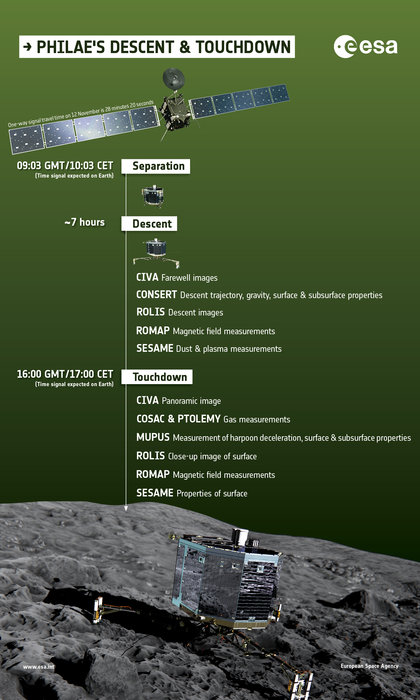
Stay tuned here for continuing developments.
Want to keep up-to-date with all things space? Be sure to “Like” AmericaSpace on Facebook and follow us on Twitter: @AmericaSpace
Missions » Rosetta »


